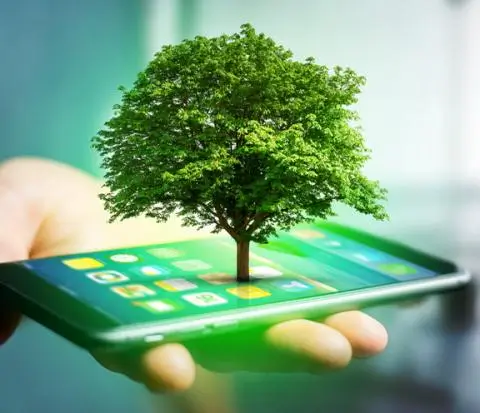How does the scoring work?
The Eco Rating score is a number used to indicate the environmental performance of mobile phones and is based on an objective assessment of both life cycle and environmental impact indicators.
The highest possible score is 100 for maximum environmental performance. So, the closer the score is to 100 the better is the environmental performance of the device. This indicator can be used as a guideline when purchasing devices with the lowest impact to the environment.
The Eco Rating label will also present five other assessments, covering 1) extraction of raw materials and production, 2) packaging and 3) transport, through to 4) durability during use and 5) how effectively the device can be recycled at the end of its life:
ECO RATING
The methodology
The Eco Rating method is capable of evaluating mobile phone devices from an environmental perspective. The method allows us to obtain a final unique score showing the environmental performance through its full life cycle of each assessed device.






